Laser Tattoo Removal in Vilnius
Search and Compare the Best Clinics and Doctors at the Lowest Prices for Laser Tattoo Removal in Vilnius
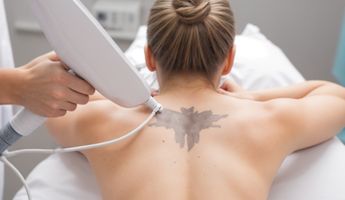
Find the best clinics for Laser Tattoo Removal in Vilnius
With Medijump you can browse 1 facilities offering Laser Tattoo Removal procedures in Vilnius. The cheapest price available is $112 in Vilnius. And for the cheapest price globally, prices start from $3 in Vietnam.
Laser Tattoo Removal in Lithuania
Price: $ 112
Laser Tattoo Removal in Vilnius
Price: $ 112
Vietnam offers the best prices Worldwide
Price: $ 3
From 10 verified reviews
AGNĖ KULBYTĖ-PETRAUSKIENĖ, 23 December 2019
I have visited many times, doctor dermatologist Justė Kantauskaitė - a great specialist, left a wonderful impression both as a person and as a specialist in her field. Next time I would pick her again. My daughter also really enjoyed it!
Compare Before & After Photos of _procedure_photos.phpLaser Tattoo Removal
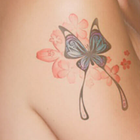

Front view
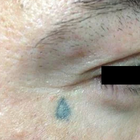
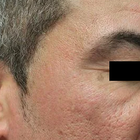
Half-side view
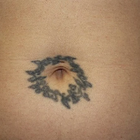

Front view
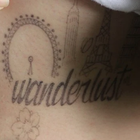
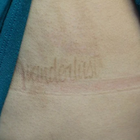
Front view
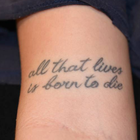
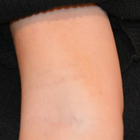
Front view

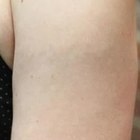
Full-side view
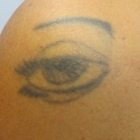
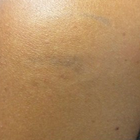
Front view
WHY US?
At Medijump, we're making medical easy. You can search, compare, discuss, and book your medical all in one place. We open the door to the best medical providers worldwide, saving you time and energy along the way, and it's all for FREE, no hidden fees, and no price markups guaranteed. So what are you waiting for?

Free

Best Price

Widest Selection

Risk-Free
What you need to know about Laser Tattoo Removal in Vilnius
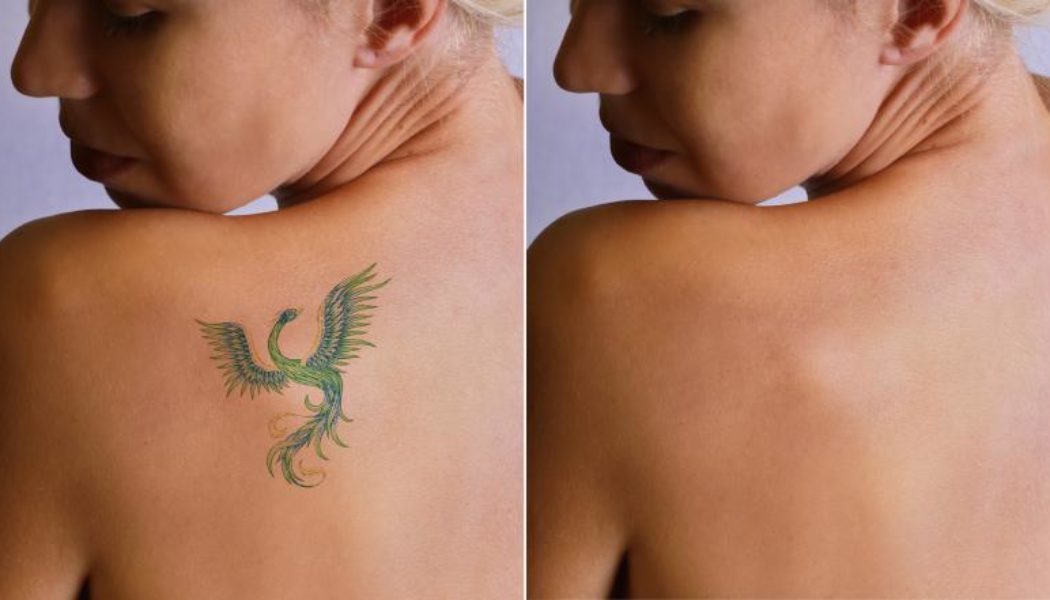
Laser tattoo removal is a technique to eliminate an unwanted tattoo with little to no side effects. It works by breaking up the pigment colors with a high-intensity light beam. You can undergo a laser tattoo removal if you regret having a tattoo, unhappy with the appearance of your tattoo, the tattoo causes infection, or you have an allergic reaction to the tattoo. Once you've done laser tattoo removal, your unwanted tattoo will be gone forever.
Grasping the notion that Laser Tattoo Removal is not a one-off activity, but instead encompasses an array of treatments distributed over multiple weeks, is crucial. Variables like the dimensions, hue, tattoo positioning, along with the person's general well-being determine the count of requisite sessions.
What is the cost of Laser Tattoo Removal in Vilnius?
In Vilnius, the Laser Tattoo Removal cost can greatly fluctuate. It hinges upon several considerations such as the size, emplacement, tattoo color, and the amount of needed therapy sessions. Other influencing factors are the laser technology utilized and the reputation of the clinic.
The majority of clinics in Vilnius extend payment schemes and financing aids to render the process more financially manageable. Bear in mind, though, that Laser Tattoo Removal isn't typically included in medical insurance coverage as it's deemed a beauty-related procedure. Irrespective of the expenditure, it is vital to give precedence to first-rate care and the proficiency of the healthcare staff over cost-effectiveness.
What does a Laser Tattoo Removal Procedure Involve?
The process of Laser Tattoo Removal entails directing particular wavelengths of laser light on the tattooed part of the skin. A highly specialized laser is chosen depending on the colors present in the tattoo for carrying out this technique. The light pulses penetrate the skin's topmost layers to reach the tattoo's pigment. This energy from the light leads to the fragmentation of the tattoo ink into minute particles, which are gradually flushed out by the body's immunity system.
Most people do not need anesthesia, but you can ask for a topical or local anesthetic from your doctor. During the procedure, you will have to wear protective eye shields. Then, your doctor or technician uses a laser to bring pulses of intense light to the top layers of your skin and only the tattoo pigment will absorb this light. Depending on the size, color(s), and age of your tattoo, you might need more than one treatment session.
How Long Should You Stay in Vilnius?
You can leave Vilnius after your tattoo removal procedure. However, it may take several treatments to completely remove the tattoo. Given that everyone reacts distinctively, the process might necessitate anywhere from 3 to 10 visits. The interval between each treatment is around 7 weeks to allow the treated area enough time to heal. You are free to retreat to your home, or a place of your choosing, in between these sessions. This sequence persists until your tattoo is completely removed. Nevertheless, it is critical to resume your journey to Vilnius for each forthcoming Laser Tattoo Removal.
What's the Recovery Time Like?
You will feel pain and discomfort for around a week, but your skin will completely heal in around six weeks. You should be able to go to work as long as you do not feel any pain or discomfort that interferes with your life.
Right after every session, you may observe minor swelling and a reddish tint on the manipulated area. These indications normally wane within a short span that can range from a few hours to two days and can be tamed with chilled packs and popularly accessible pain relievers. Evading exposure to sunlight and demanding activities in the initial few days is of utmost importance to forestall probative issues.
What sort of Aftercare is Required for Laser Tattoo Removal Procedures in Vilnius?
Your doctor will give you aftercare instructions; make sure to follow the instructions. Keep the treated area clean, do not soak the area, and try to avoid popping blisters. If the treated area itches, apply hydrocortisone cream. Avoid smoking as it can reduce the effectiveness of laser tattoo removal by around 70%.
The treated region should also be protected from the sun and covered with a high SPF sunscreen because the skin will be more susceptible to UV deterioration. Additionally, avoiding activities that could result in significant sweating or close contact with the area of the skin that is receiving treatment is advised. You must avoid the impulse to pick or scratch at the treated area if you want the skin to heal properly. Finally, maintaining effective healing and general health requires drinking plenty of water and eating a diet that is nutritionally balanced.
What's the Success Rate of Laser Tattoo Removal Procedures in Vilnius?
Laser tattoo removal is the most effective tattoo removal treatment with a success rate of over 95%. It's important to understand that when discussing tattoo removal, the term "effectiveness" typically refers to the degree of tattoo fading rather than complete tattoo removal. The depth, type, and concentration of the ink, the tattoo's colour, as well as the recipient's skin features and overall health, can all have an impact on the final design.
Are there Alternatives to Laser Tattoo Removal Procedures in Vilnius?
Laser Tattoo Removal has evolved into a highly effective strategy for eliminating tattoos, but you're afforded various other alternatives if Laser Tattoo Removal does not align with your requirements. Intense pulsed light (IPL) therapy, for instance, where light pulses are deployed to dissolve the tattoo ink, could be a viable proposition particularly for larger tattoos. However, for heavily inked or deeper tattoo locations, IPL might not yield the desired outcome.
Dermabrasion is yet another alternative. It's a process that employs skin 'sanding' to eliminate the surface and middle skin layers. Compared to laser treatments, dermabrasion can be less comfortable and requires a more prolonged healing duration. In certain instances, it might also be viable to surgically remove the tattoo with a scalpel, but be prepared for the potential of scarring. Therefore, when deciding on the best course of action, it's important to discuss your unique requirements and expectations with a specialist.
What Should You Expect Before and After the Procedure
Before the Laser Tattoo Removal, there will be a discussion with the expert regarding your health history, the treatment information, and your anticipated outcomes. The area on which the tattoo is located must be hygienic and devoid of any ongoing skin issues. A topical anesthesia may be applied during the session for your comfort. The feeling you might experience when the laser is used could be likened to the feeling of a rubber band being flicked against your skin.
Post-treatment, the tattooed section may look inflamed and red, and it could feel a bit warm to the touch and tender. These symptoms should diminish over a few days. It is vital that you adhere to the follow-up care guidelines given by the clinic to ensure the best healing process and outcome. Generally, this requires cleanliness of the area, avoiding direct sun, and abstaining from activities that can irritate the skin. Regular check-ups of your healing process with your expert can assist with timely detection and management of any potential post-treatment issues.
What are Potential Risks of Laser Tattoo Removal?
Laser Tattoo Removal carries some side effects and risks, such as:
- Infection
- Hypopigmentation and hyperpigmentation (treated skin becomes significantly darker or lighter than its surroundings)
- Scarring, bleeding, swelling, and blisters
It's important that you get proper treatment by a reputable doctor to avoid these side effects and risks.
Whilst the information presented here has been accurately sourced and verified by a medical professional for its accuracy, it is still advised to consult with your doctor before pursuing a medical treatment at one of the listed medical providers
No Time?
Tell us what you're looking for and we'll reachout to the top clinics all at once
Enquire Now

Popular Procedures in Vilnius
Prices Start From $28

Prices Start From $6,002

Prices Start From $278

Recommended Medical Centers in Vilnius for Laser Tattoo Removal

- Interpreter services
- Translation service
- Religious facilities
- Medical records transfer
- Medical travel insurance
- Health insurance coordination
- TV in the room
- Safe in the room
- Phone in the room
- Private rooms for patients available

- Interpreter services
- Translation service
- Religious facilities
- Medical records transfer
- Medical travel insurance
- Health insurance coordination
- TV in the room
- Safe in the room
- Phone in the room
- Private rooms for patients available

- Interpreter services
- Translation service
- Religious facilities
- Medical records transfer
- Medical travel insurance
- Health insurance coordination
- TV in the room
- Safe in the room
- Phone in the room
- Private rooms for patients available

- Interpreter services
- Translation service
- Religious facilities
- Medical records transfer
- Medical travel insurance
- Health insurance coordination
- TV in the room
- Safe in the room
- Phone in the room
- Private rooms for patients available
Laser Tattoo Removal in and around Vilnius
About Vilnius
Vilnius is the capital of Lithuania and is also the largest city in the country, with a population of around 564,147. Vilnius was once referred to as the ‘Jerusalem of the north’ but the Jewish community was largely wiped out in WWII. The city does not hide its battle relics. Tourists will find museums dedicated to the Holocaust and preserved the KGB torture chamber. Other than its fascinating history, Vilnius also offers spectacular architecture, trendy bars, and hot-air balloons.
Vilnius is emerging as a medical tourism destination. Every year, medical tourism in Vilnius continues to expand and evolve. Medical treatments in Vilnius are gaining a powerful reputation among medical tourists. The vast majority of the medical tourists coming to Vilnius are from the Middle East, the United States, and Western Europe. Many tourists travel for Breast Augmentation or other cosmetic surgery. Kardiolita Hospital is one of the most popular medical facilities in the city. There are many reasons why local and international medical tourists come to Vilnius, including:
- Medical facilities with international standards such as JCI accreditation.
- Highly educated doctors and medical practitioners.
- Comprehensive diagnosis in just a single day.
- Foreign language speaking doctors and health care staff.
- Modern and secure equipment.
- Affordable prices for a wide range of medical treatment.
Popular Areas in Vilnius
Vilnius is a driving force behind Lithuania’s tourism sector. The city has affordable attractions, accommodations, and restaurants, Historical landmarks, extraordinary architecture, green spaces, and an array of cafes making the city a special place to visit.
- Palace of the Grand Dukes of Lithuania is located in the heart of Vilnius. The building has a Renaissance, Gothic, and early Baroque architectural styles. The reconstructed palace is now transformed into a museum with 4 exhibition tour routes related to the historical functions. A guided tour is in English, Russian, and German is available for tourists.
- Museum of Occupations and Freedom Fights (KGB Museum) is a museum with the darkest history in Vilnius. It is located in the former KGB building and preserved exactly how the KGB officers left the building. A museum is an excellent place for tourists who want to learn more about history.
- Antakalnis Cemetery in Vilnius is arguably one of the most interesting graveyards in Europe. The cemetery is the final resting place of Lithuanian leaders and locals lost to war. The most notable monuments are the Memorial of Red Army Soldiers and the monument of the victims of January 13, 1991.
- Gediminas’ Tower of the Upper Castle is the remnant of a brick castle built by the Duke of Lithuania, Vytautas Magnum. Tourists can get onto the top of the Gediminas Hill by foot or by the provided modern lift. While in the modern lift, tourists can see panoramic views of Vilnius along with the River Neris.
Weather and Climate in Vilnius
Summers in Vilnius is warm and dry, with occasional showers and chilly days. Summers are short, lasting for around two months from June to August. The average temperature in the summer is around 11 °C to 22 °C. Summers are usually the busiest time for the city’s tourism.
Although autumn is exceptionally beautiful and has many sunny days, the temperature will cool down rapidly during this season. It can get as low as -1°C in mid-November.
The winters are freezing when the average temperature plummets to -9°C. The temperature will remain below zero until March. Winters in the city can be an amazing time. However, it can be difficult in rural areas.
Spring usually arrives late in April and does not last very long. The temperature in Spring is cool and the green spaces are blossoming.
Getting Around in Vilnius
Vilnius International Airport is the largest airport in Lithuania that connects the country with European cities. It is the hub for air Baltic and Get Jet Airlines. The airport serves many major airlines, as well as budget airlines such as Ryanair and Wizz Air.
Tourists can take the airport taxis to the city center. The taxis can be found in front of the arrivals terminal. A ride to the city center should cost around 10 EUR to 18 EUR. The city bus is another option to travel to Vilnius city center. It is more affordable than taxis, with a single ticket costs around 1EUR.
Walking is the best mode of transportation for exploring the Old Town. A good portion of Vilnius’s attractions is located within walking distance. Buses and trolleybuses are also available, tickets cost 1 EUR which can be paid directly to the driver. Taxis are not very recommended because many taxi drivers are known to cheat foreigners. Uber is available.
Tourist Visas in Vilnius
European Union citizens, American, Canadian, Australian, and British can stay in Vilnius for up to 90 days. Citizens of other countries must apply and obtain a visa before entering Lithuania
The country is part of the Schengen Area, tourists who already hold a Schengen visa does not have to apply for a new visa to enter Lithuania. A passport valid for at least three months beyond the length of stay is required.
Additional Information
- Local Currency: Since Lithuania adopted the euro in 2015, the official currency is the euro. 1 USD is equivalent to 0.88 EUR.
- Money & Payments: Tourists can withdraw money from ATMs. Visa and MasterCard credit cards are mostly accepted in hotels and restaurants. Tourists can tip 10% in restaurants if the service is good. Always tip in cash even when you’re paying with credit or debit cards.
- Local Language: The official language is Lithuanian. Most people in the tourism area and the younger generation can speak English fluently. A large number of the population also speaks Russian and Polish.
- Local Culture and Religion: Christianity (specifically Catholic) is the major religion in Vilnius. Small groups of the population follow Judaism, Islam, and other religions.
- Public Holidays: Vilnius celebrates major Christian religious holidays. The city also hosts many annual festivals such as Capital Days in September, Culture Night and Trakai Medieval Festival in June, Street Musician’s Day in May, and Independence Day of the Republic of Uzupis in April.
Popular Searches
- Plastic Surgery in Thailand
- Dental Implants in Thailand
- Hair Transplant in Thailand
- Breast Augmentation Thailand
- Gastric Sleeve in Thailand
- Gender Reassignment Surgery in Thailand
- Laser Hair Removal in Bangkok
- Botox in Bangkok
- Dermatology in Bangkok
- Breast Augmentation in Bangkok
- Coolsculpting in Bangkok
- Veneers in Turkey
- Hair Transplant in Turkey
- Rhinoplasty in Turkey
- Stem Cell Therapy in Mexico
- Rhinoplasty in Mexico
- Liposuction in Mexico
- Coolsculpting in Tijuana
- Rhinoplasty in Korea
- Scar Removal in Korea
- Gastric Sleeve in Turkey
- Bone Marrow Transplant in India
- Invisalign in Malaysia
- Plastic Surgery in the Dominican Republic
- Tummy Tuck in the Dominican Republic
- Plastic and Cosmetic Surgery in Poland
- Rhinoplasty in Poland
- Hair Implant in Poland
- Dental Implants in Poland
- IVF in Turkey
